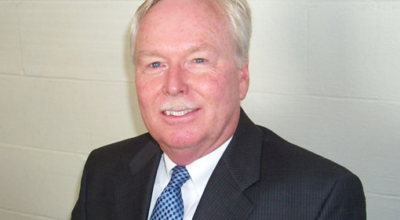We are all just the same
Published 4:45 pm Tuesday, August 25, 2015
What do you discover when you immerse yourself in a culture you don’t understand that has a currency you can’t count, a language you can’t understand and signage you can’t read? You find out that no matter where you travel, most people are all really just the same.
Our two weeks in Europe took us to the Czech Republic, Germany, Austria, Slovakia and Hungary. That is five different languages with multiple dialects. There were three different currencies, not generally transferable except for the two countries in the European Union.
Eating in local restaurants was at times challenging, though there was generally enough English available to insure that I didn’t eat goose liver or pig’s knuckles, two local favorites. To be honest, I never tasted anything that I didn’t like, although the two bites of liver pate pushed my limits.
A pleasant surprise was though we may not speak the same language, most of the people looked and acted just like you and me. The clothes were as fashionable as anywhere in the states.
Teenagers looked just like our teenagers, with cutting edge haircuts, trendy clothes and their hands permanently connected to their iPhones. Body art was prevalent everywhere, as was the graffiti.
On the other hand, some things were very different. The cars were small, or tiny, but never large. I never saw a Tahoe or a full size pickup. Most people in the cities take public transportation, some of it 50 years old and some of it sleek and new.
It was in the older part of these ancient cities that things took their greatest departure. People lived in buildings that were older than the U.S., some built before Columbus sailed for America. Watching the Astronomical Clock in Prague accurately toll the hour as it has for the past 600 years, I had a clear sense that history over time was different here.
My grandparents once spent six months traveling in Europe, half of that in Eastern Europe before the fall of the Iron Curtain. My brother and I used to say they took pictures of over 800 churches while they were there, since we had to watch a slide show with every one of them included. I understand the importance of those churches better now.
Everywhere we went we saw grander and grander churches, synagogues and cathedrals. Small towns had grand churches, a steeple rising in every village. Larger cities had more and bigger churches, seemingly every few blocks.
Outside, they were grand. Inside, they were almost beyond description, with soaring ceilings, ornate carvings, and gold everywhere.
One guide helped me understand these extravagant expenditures in the midst of so many poor centuries ago was to help the people imagine what heaven must look like. I am sure the poor farmer or tradesman of the 17th century must have been more overwhelmed than I was when he entered the magnificent buildings.
The palaces were the same way, each grander than the one before. It was the way of a ruler showing off his wealth and power. The palaces became more outrageously large and ornate as the kings tried to outdo each other. A palace of 1,500 rooms seemed small against the one with 2,000 and then 2,500 rooms. They made the Biltmore House seem small.
Yet, despite the beautiful countryside, the thousand year old traditions, and the buildings almost beyond description, it was the history of the people that touched me the most.
I visited the second largest synagogue in the world in Budapest, Hungary. Located within the walls of the Jewish ghetto, over 2,000 bodies were stacked in the garden when Budapest was liberated from the Nazis at the end of World War II.
Yet the Russians that liberated the Hungarians took Hungary over in 1948 and sent hundreds of thousands of the people to work in work camps or Gulags. Most never returned. True freedom finally came in 1989, with the fall of Communism.
The past 25 years have seen much progress made, but you can see the scars, not only in the buildings, but in the people.
The world should be our classroom and I learned a lot the past two weeks. The first person I met in the Czech Republic graduated from Auburn and lived in Albany, Georgia.
I am writing this column and will email it to the newspaper while overlooking the Danube River.
The world is becoming smaller, and despite our many differences I can’t help but believe that in many important ways we are all just the same.




